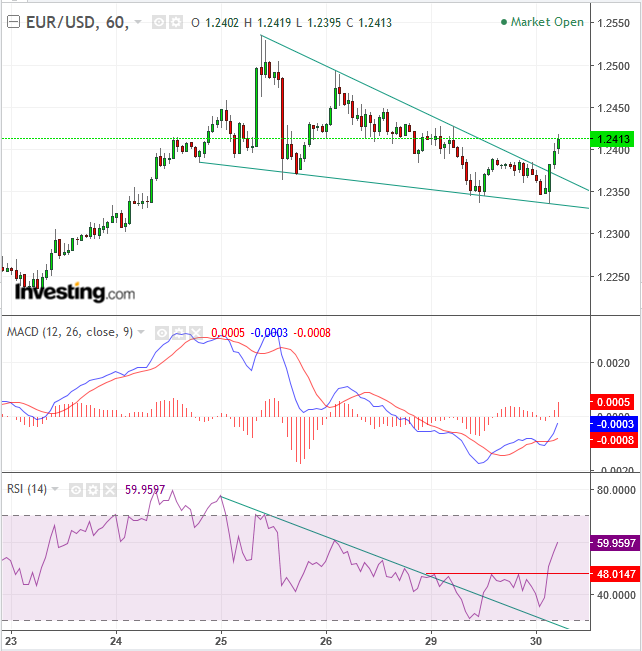Investing.com’s stocks of the week
The record-after-record surge in stocks brought savings in the U.S. to a 12-year low, while spending hit a 6-year high. Americans are investing and spending, which are extremely bullish indicators for the economic outlook.
The dollar rose 0.23 percent after yesterday's Personal Spending release at 8:30 AM EST until 11:00 AM EST when it began to decline. Today, again, the price rose to yesterday's highs but fell back down immediately during Asian trading. Why would such bullish data be greeted with such a lukewarm response by traders?
The fact is that most institutions are long euro and short dollar, setting up for another leg down in the dollar selloff since January of last year.

Today at 2:00 AM EST the EUR/USD pair struck back after the much talked about dollar rebound when it completed a falling wedge pattern. While a falling pattern may seem bearish, such as in the case of a descending triangle, it is in fact bullish. In a descending triangle, demand is at a fixed price, creating a barrier, which once absorbed allows for the price to fall.
In contrast to the descending triangle, the falling wedge has no clear line of demand. In fact, the development of the falling pattern within a rising trend only attracts further demand, already maintaining a preconceived notion of the trend.
The upside breakout completes the pattern, dispelling any doubts regarding its bullishness.
Both the RSI (which measures momentum and therefore tends to move ahead of prices) and the MACD (which forms a price gauge by comparing different sets of averages) have provided buy signals.
Trading Strategies – Long Position
Conservative traders are likely to wait for a higher peak than the 1.2536 level registered last Thursday, in validation of the prevailing uptrend.
Moderate traders would probably wait for a return move to test the pattern’s viability.
Aggressive traders may enter a long now.
Equity Management
Stop-Loss: beneath the 1.2337 low of yesterday.
Target: 1.2500 – psychological round number and closing-price resistance since Thursday.
Risk-Reward Ratio: Enter at a price that would allow at least a 1:3 RRR between the stop-loss and target.
